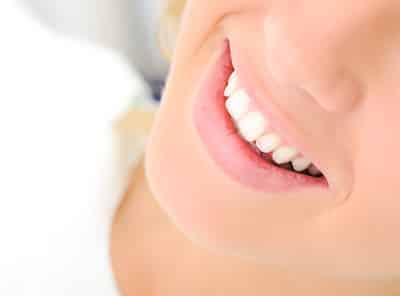Everything you need to know about teeth whitening

During the six years that I have been part of the Smile Solutions team, we have carried out at least two or three teeth whitening procedures a day – that’s how popular this treatment is.
We always start off with a consultation to get an idea of the candidate’s expectations. Then we carry out a complete dental assessment to ensure that the patient’s teeth are healthy and sound in readiness for the process. Finally, we discuss the expected outcomes and the different systems that are available.
Candidates should be aware that the results of whitening typically last 18 to 24 months, with some rebound (loss of whiteness) to be expected during the initial treatment.
Of the two methods that we make available, probably the most often requested is the at-home whitening system, worn in an individually fabricated tray. In preparation for this, we take impressions of the patient’s teeth, make up custom-fitted trays, and give the patient a whitening gel to take home and apply for around 30 to 60 minutes each day. Depending on the gel itself, some formulations are worn overnight. The course of treatment is usually two to three weeks.
The second option involves having the patient come to Smile Solutions where we do the whitening for them; this is called in-chair bleaching. With the in-chair procedure we use a stronger peroxide, so we are able to achieve a slightly greater “wow” factor than the take-home kit can produce.
The option I favour is a combination of the above two methods, with in-chair bleaching maintained over time by at-home whitening.
Why you should visit your dentist first
For either of these options, a prior dental assessment is crucial. I don’t offer any in-chair bleaching or at-home whitening until I have done a full assessment of the patient’s dental health. I first check that the patient does not have any open cavities and that they have sufficient enamel to prevent any prolonged sensitivity. I also make sure that I’ve tailored the whitening peroxide strength to the patient’s tolerance level. For people with a high level of sensitivity, I use a lower concentration of peroxide.
As you can see, a lot of knowledge and research has gone into the science of teeth whitening; it’s not as simple as is sometimes made out. Many of the over-the-counter products are relatively safe – in that the level of peroxide they contain is very low or non-existent. Instead, such products contain abrasives that help remove external staining from the teeth.
My patients often ask me whether the abrasive ingredients in proprietary products can be harmful. I always warn them that any abrasive can cause wear and tear to tooth enamel if not properly used. While off-the-shelf products are generally safe in this regard, they should be used with some caution and strictly according to the manufacturer’s instructions. It’s also of great concern when people purchase these products, either online or over the counter, without having a clean bill of dental health and without the supervision of a qualified dentist. And then there is the unpredictability of the whitening outcome achieved using these products. In my opinion, an even greater risk is presented by the high concentrations of peroxide often used by beauty salons and solariums.
Such strong products can cause damage when administered by people without appropriate training and experience in dentistry. Not only that, people who have had their teeth whitened at a salon or a solarium often express disappointment with the results. One patient who came to me for remedial care had substantial burning and gum damage after teeth whitening that she said had been done by a beautician at a solarium.
So our advice is to play it safe: seek the trained services of a qualified dentist before embarking on any teeth whitening treatment.
